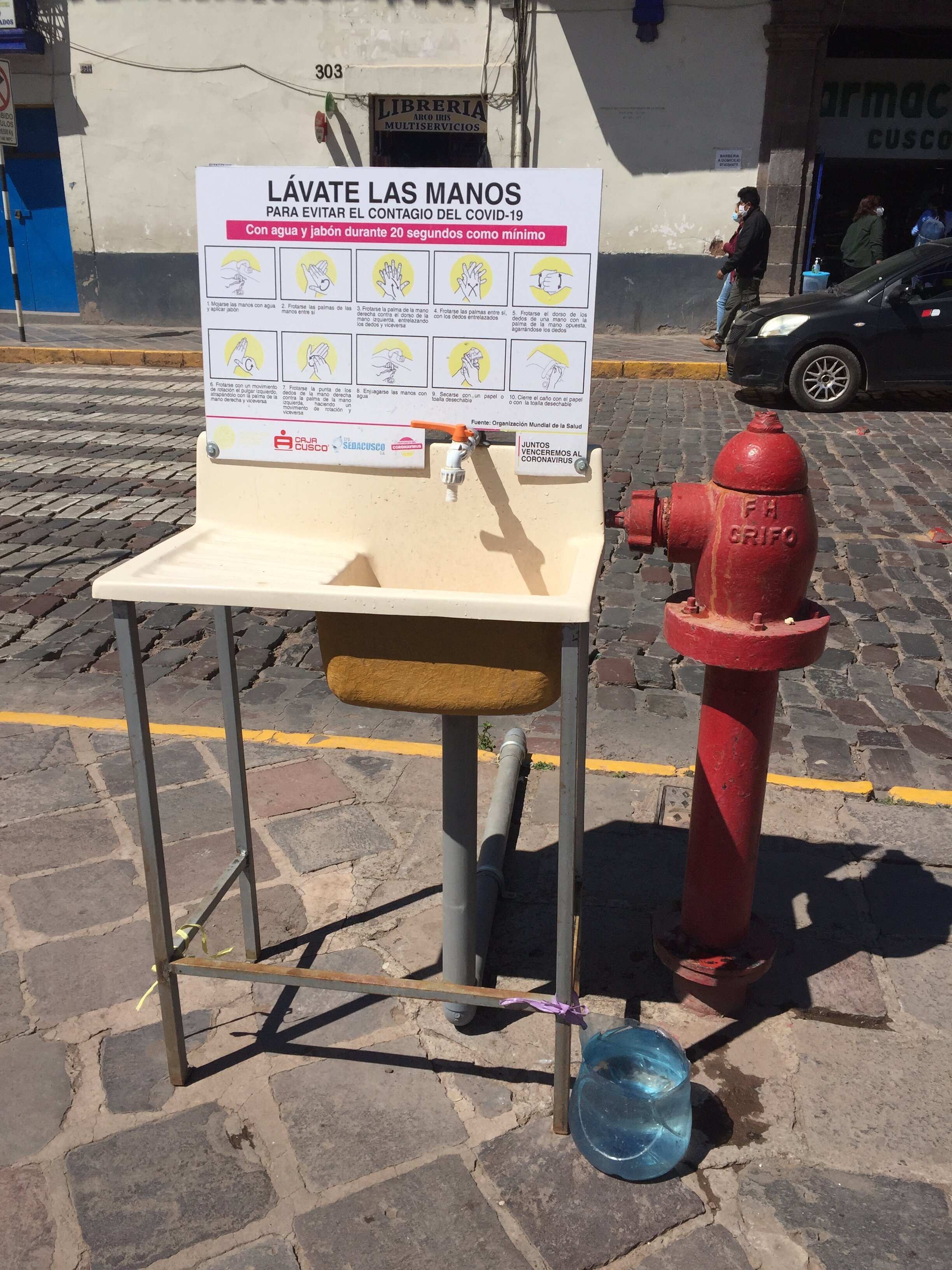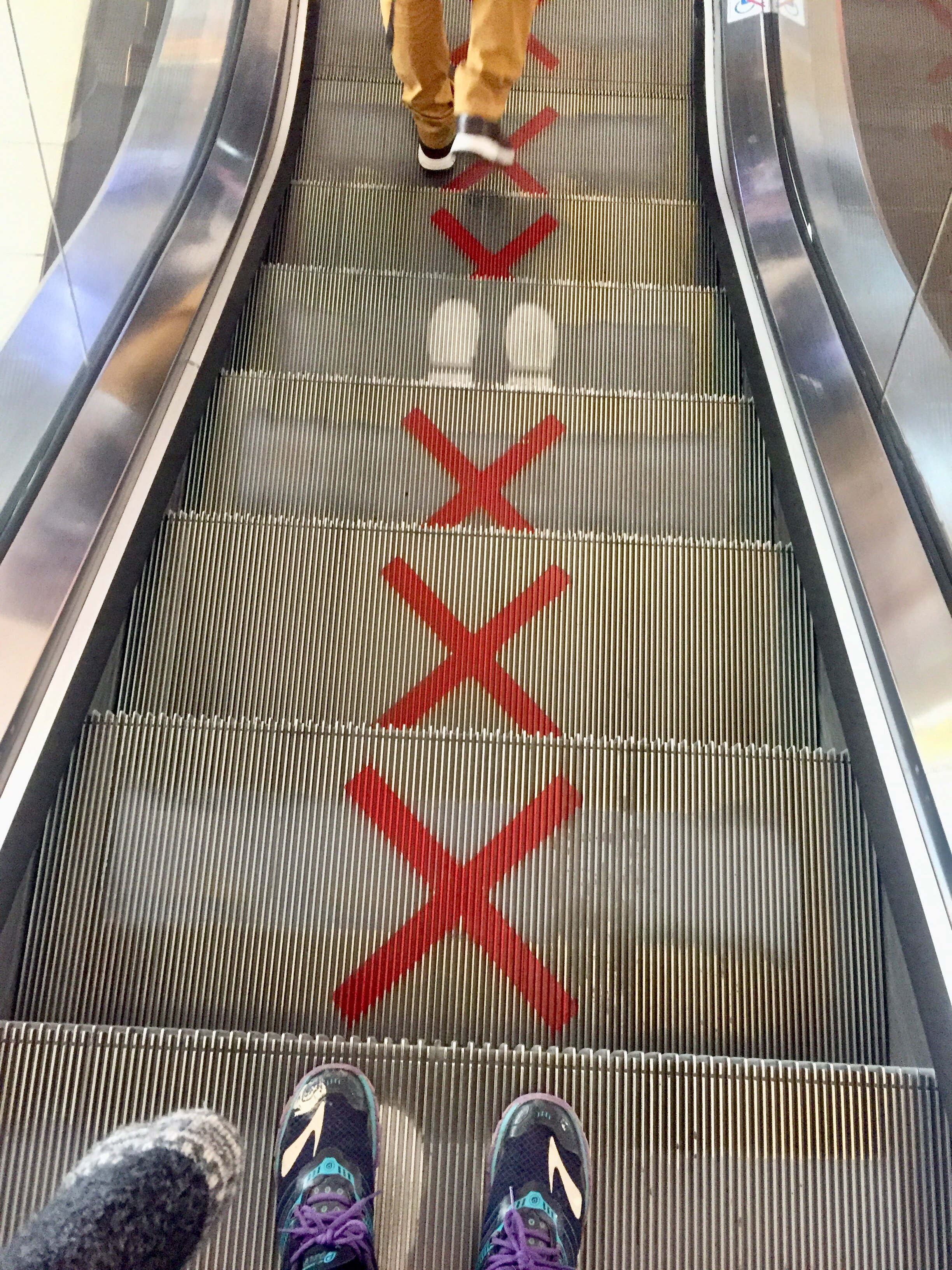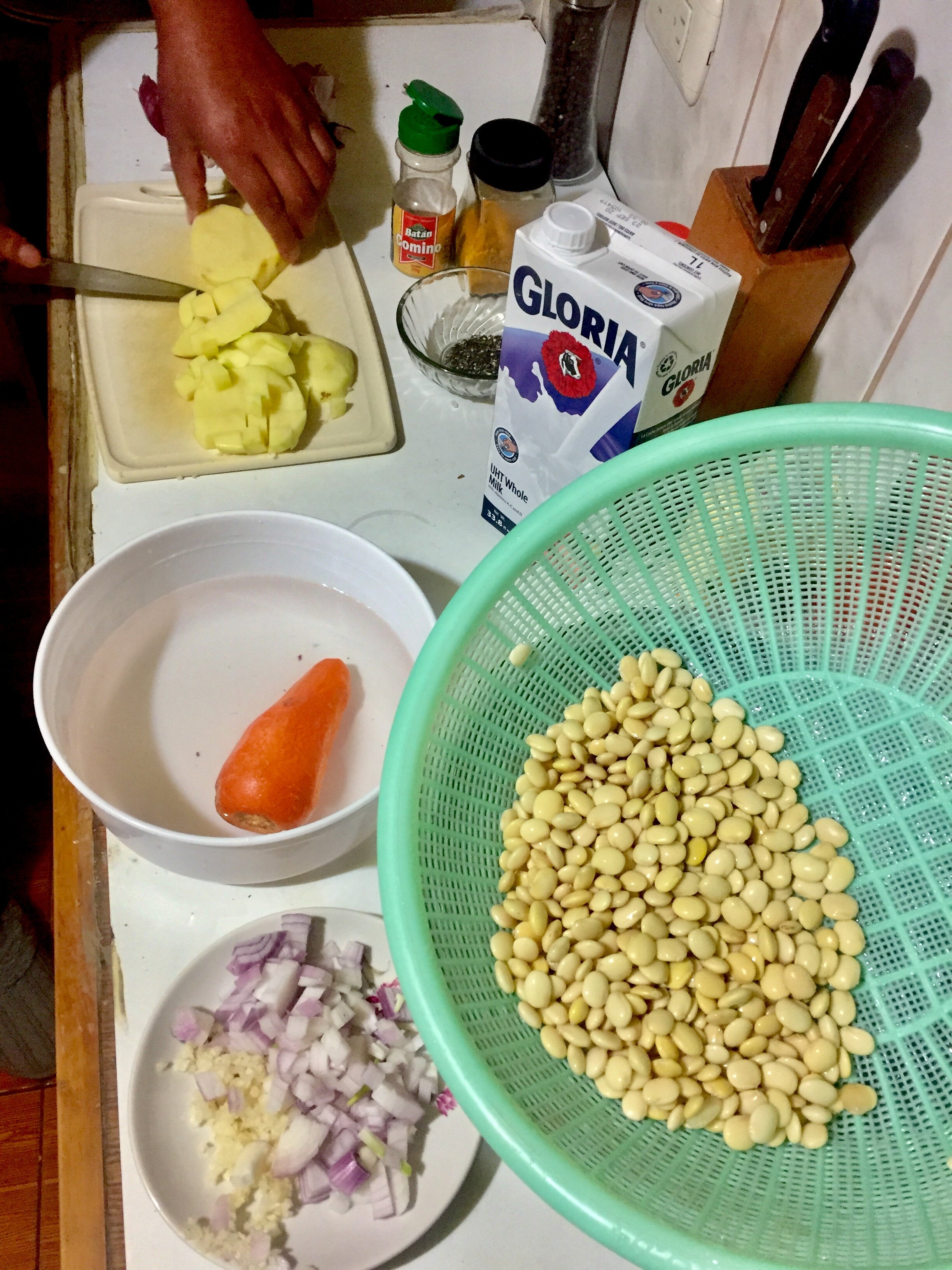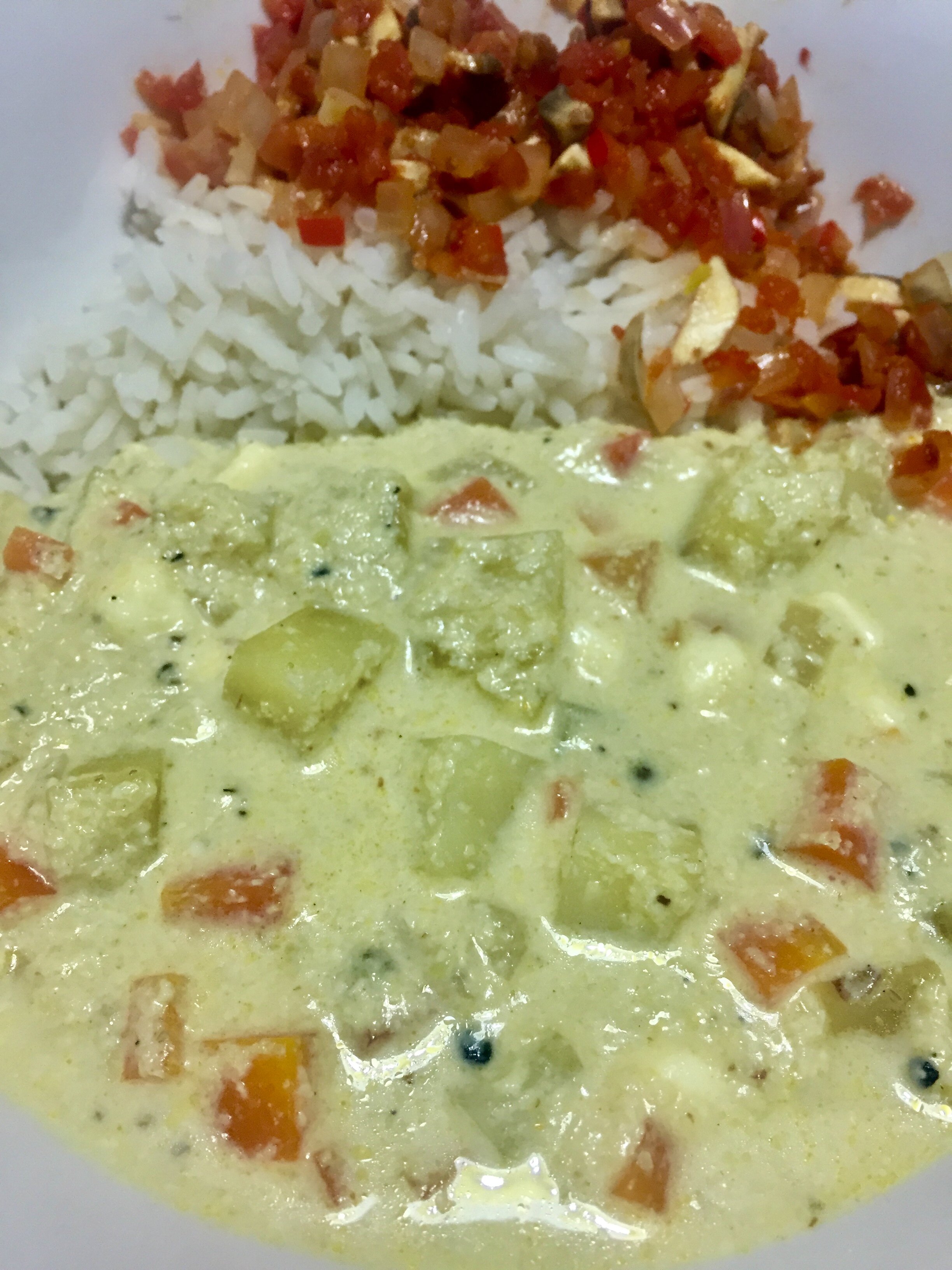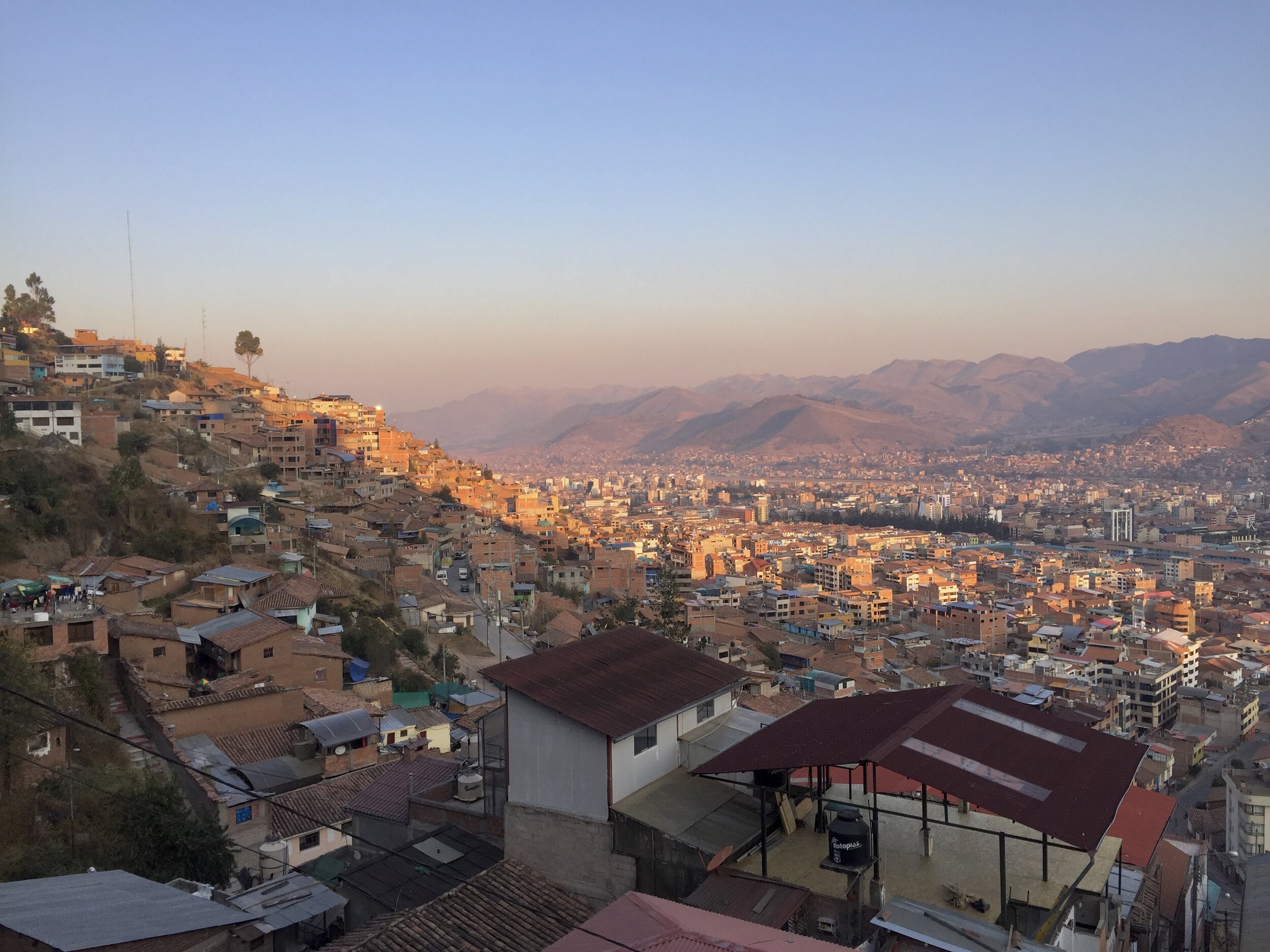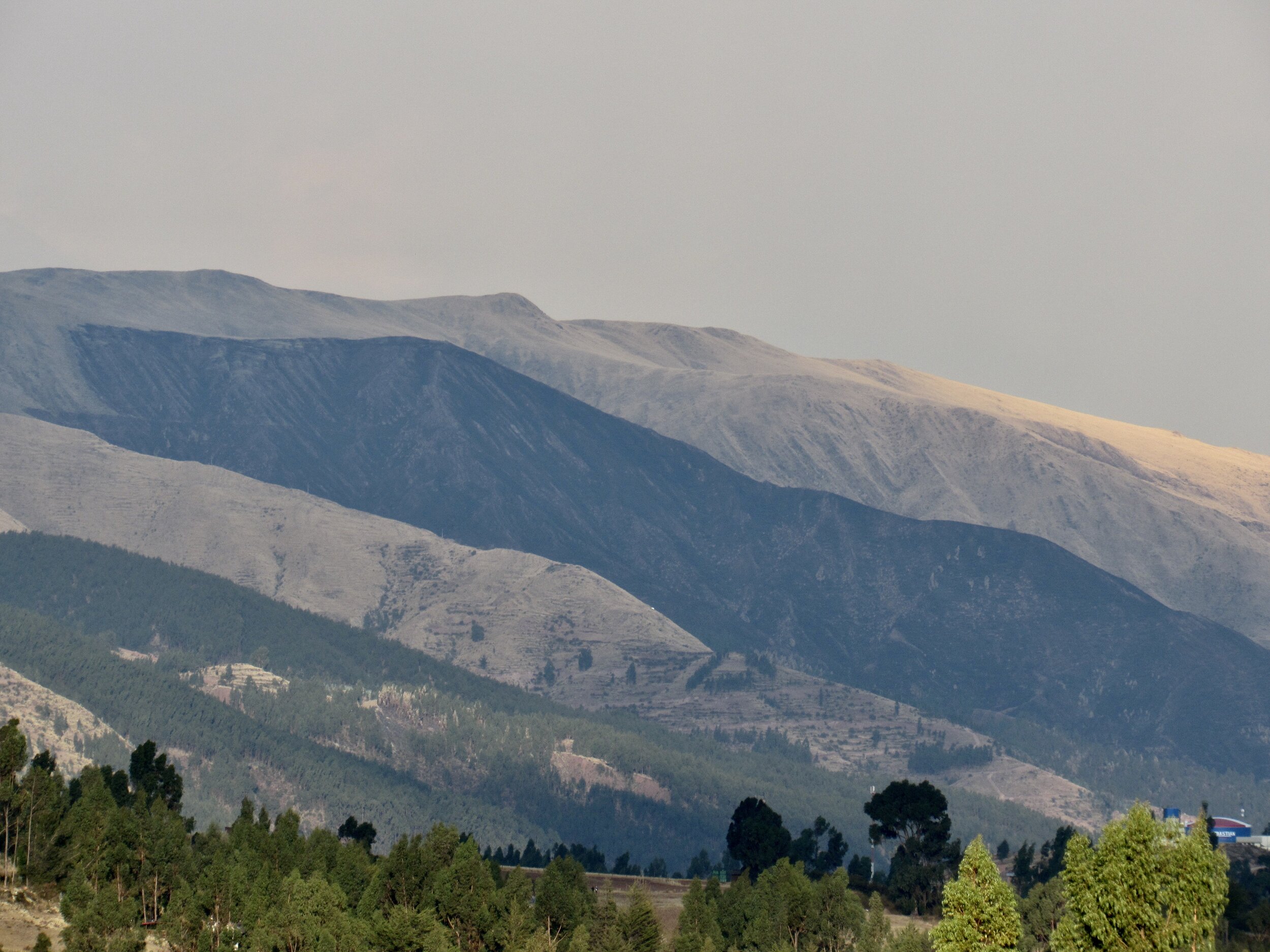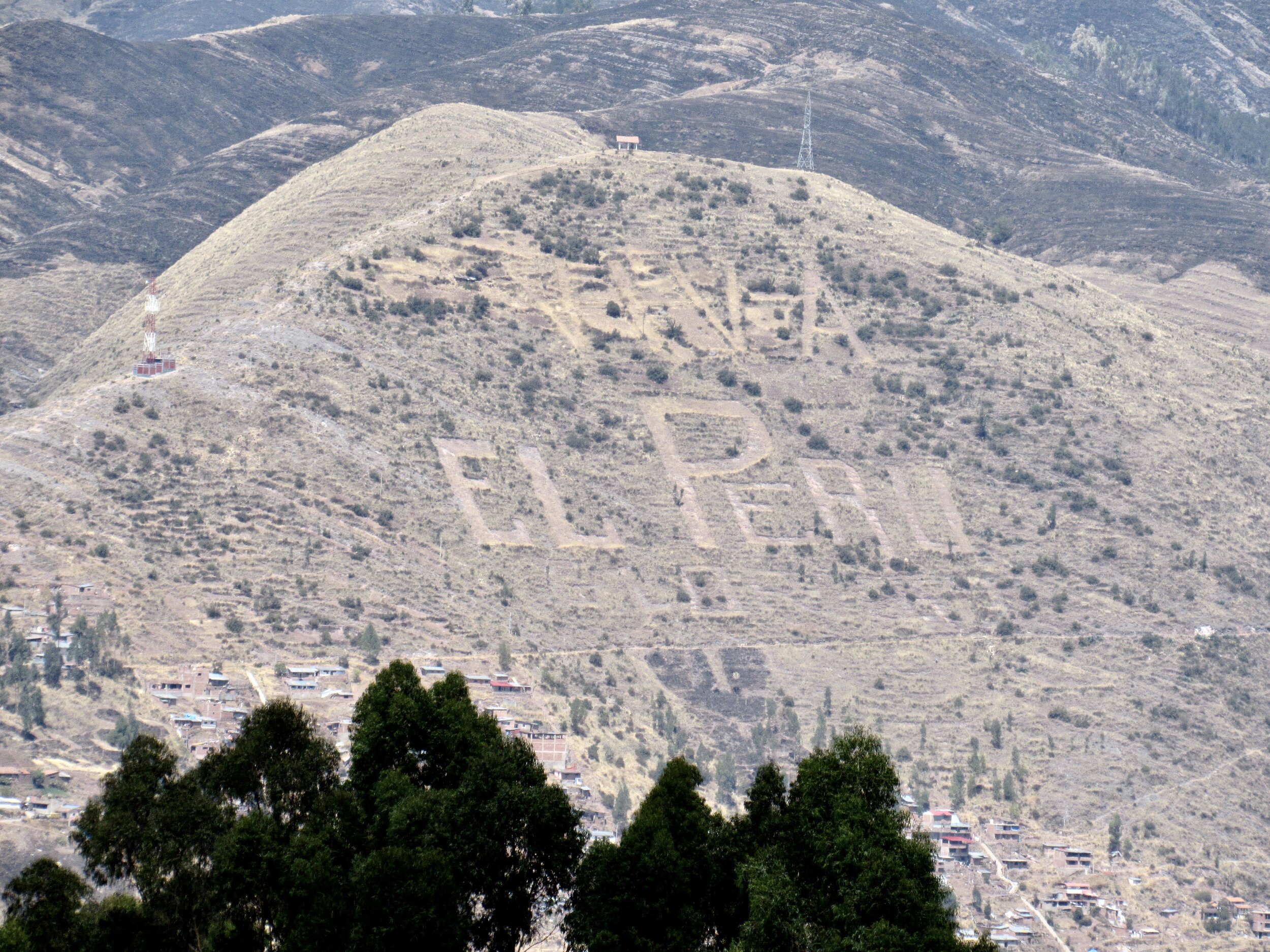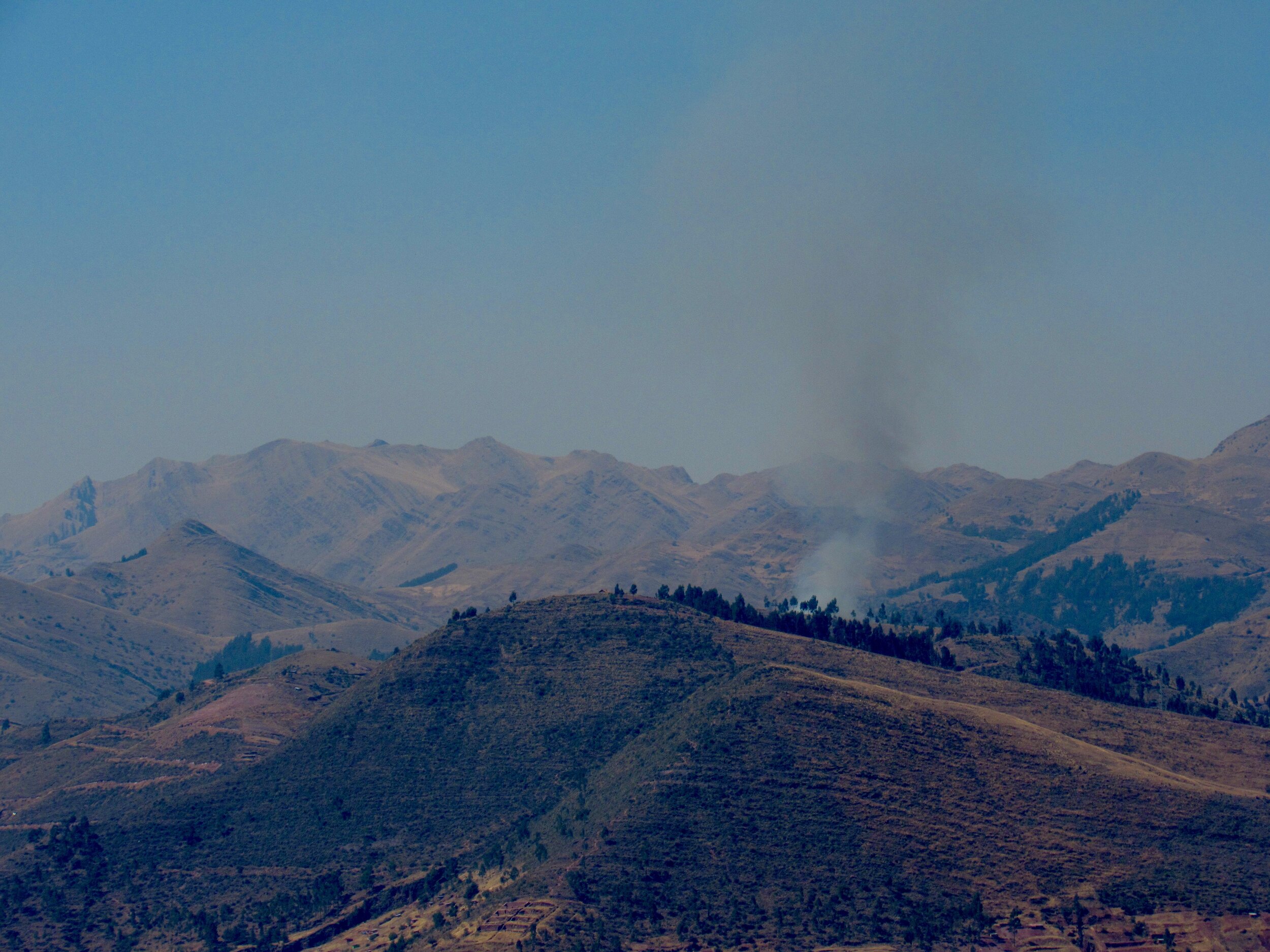COVID in Cusco: Week 24
Sunday, 23 August, 2020
163 days since Covid first arrived in Cusco
It’s hard for me to believe that we’ve been in some form of quarantine/lockdown for that long. At this point, it’s also hard to believe that life will ever be normal again. Everything is so different now. My day to day life has so completely changed that I feel like I’m living in a totally different country than I was five months ago.
One of the reasons I moved to Cusco is that I wanted to see more of the area. The pandemic has ruined that plan. Now, the only times I can leave the city are with the Covid Relief Project. Yesterday was our 6th trip to a village to take food and school supplies, and it was beautiful. The drive to and from Mayubamba really is so scenic. It reminds me of all of the places that are still there, that I’ll be able to visit as soon as we can get the infection rate under control.
As much as I want to go camping and backpacking, I also want to protect these isolated villages from getting exposed to Covid. I really need to just stay home - like I have been for the past 163 days.
The Covid Relief Project has been a wonderful distraction for me. It has given me purpose and kept me busy. I have learned a lot and am so grateful to all of the people who sent us money to take food and school supplies to those six villages. There were days that I felt like it was just a drop in the bucket, but when I was actually there and saw how much this food meant to those families, it seemed like a much bigger deal.
As the pandemic drags on, things are getting harder. Most of the people I know in Cusco used to work in tourism. None of them have any hope for the tourism industry to revive in 2020. We are just hoping that we can get at least a little work next March or April. Hopefully, all of the people who really wanted to see Machu Picchu in 2020 are planning to come next year.
Even though things are getting harder for people here, they’re also getting harder for everybody all around the world. Yes, some countries have better control of the situation than others, but people who have been unemployed for a while are still in a precarious financial situation. Result: it’s getting harder and harder to get donations. There’s just no way that we can continue to raise $1000 every three weeks. Most of our donors are tapped out.
After talking with Auqui and Henry, we have decided to transition the Covid Relief Project to start saving for Christmas. Yes, it’s still August, but I am really worried about what things will be like here in December. After being unemployed or underemployed for most of 2020, what will anybody have to give their children this year?
It is very common for companies and organizations to do a “chocolatada” for Christmas. This basically entails going to a village and making hot chocolate for all of the kids and giving them a specific sweet Christmas bread, like mini panettone. Sometimes they also take toys for the kids and normally you get to play with the kids too.
Playing with children now is out of the question and most of the toys that are available in large quantities here are cheap plastic things that are a toy for a week or two, then trash for the next several centuries. Still, there has to be a way for us to do a good chocolatada, even under Covid rules.
After a little math, I figured out how to do a good chocolatada for the size of village that we’ve been going to: 100 families and about 200 children. For the same $1000 that we have been raising for food, we can get hot chocolate and sweet bread for 200 kids, plus warm socks for all of them. I’m also including 5kg bags of rice and a liter of vegetable oil for all 100 families. People are going to need a lot more than just hot chocolate for their kids this year.
I’ve set Henry & Auqui to work figuring out which villages will need it most and given myself the task of figuring out how to fundraise for this.
Aprendo en Casa: I learn at home
At the top, in bold, it says “At home we learn best with love, patience, understanding and tolerance.” I wonder how many parents around the world need that reminder. Teaching is not easy and trying to help your kid manage distance learning must be very stressful for a lot of parents.
Monday, 24 August, 2020
I made the mistake of looking at the news today and the first article I saw was about the spike of Covid cases in the Cusco region. Cusco itself is about the same size as Boise, Idaho and the region of Cusco has about the same population as Idaho. A couple weeks ago Idaho was getting about 500 new cases per day, though it’s now down to about 300. I was worried about my parents during that spike. 500 per day seemed like a lot.
Cusco region has, in the past three days, registered 2,893 new cases and 71 dead. A thousand new cases per day? One death every hour? In Cusco? Apparently we now have over 18,800 cases and 427 deaths.
Sure, these numbers might not look so bad compared to Italy in April or New York City in May. However, in April and May, we didn’t have any new cases in Cusco, or any deaths. Our numbers haven’t been accumulating since February or March. Cusco really had it under control until June, when they started to open things up. If we had stayed in lockdown, we wouldn’t now have a thousand new cases per day and a death per hour.
Like my Mom has pointed out about countless places around the world, no new cases doesn’t mean that the quarantine worked. It means that it’s working. It means that we shouldn’t think that this pandemic is over. We could very well still be in the beginning stages. What if this pandemic goes on for three years? We are just six months in. What if there are another two and a half years to go?
At the very end of the article quoted above, there was a little footnote about how Diresa (the regional branch of the Peruvian Ministry of Health) will be administering 10,000 Covid tests to the population of Cusco to detect new cases. I didn’t think much about how they would do that until I heard from a few friends who have been out and about today.
I’m trying to stay home as much as possible, but sometimes a person had to go buy food. More than one person today told me that they actually saw police rounding people up in parks and plazas to go get tested. I have no idea if the police were kindly asking people to take a test to add to the overall data that we need during a pandemic, or if they were telling people to go get a test or they would be arrested. Or maybe something in between those two options? Whatever they were saying, I got more than one report of friends actually seeing police go up to people in public spaces and then walking them over to a testing station.
Thankfully, these testing stations also had long lines. With testing suddenly free, I suspect quite a few people would want to know. If I wasn’t so afraid to leave the house, I would be tempted to go see what the testing stations are like. Is it completely free for everybody? Who is administering the tests? Who is keeping the data? Are the people waiting in line spaced out enough that going to get a test wouldn’t be a vector for catching the virus? What are the police saying to people?
This is how I know that I’m not a journalist at heart. I have a lot of questions, but not the drive to go get the answers. I’d rather stay home and avoid the crowds. A real journalist would be out there. War journalists risk way more than catching Covid to get the news of what is happening in a battle out to the public. I am not that dedicated to getting the truth. I would rather stay home and think that I am safer for it.
Tuesday, 25 August, 2020
One impact of Covid that has been global is closing restaurants. This has been great for those of us who like to cook and just needed that extra push to really take the time to do more experimenting in the kitchen. Cooking my own meals every day, for five months has given me plenty of time to try new recipes. Of course, that also means always doing my own dishes. I miss some restaurant meals, especially ceviche, though what I miss most is having the server taking the dishes from my table for somebody else to wash.
Peruvian cuisine is increasingly popular at gourmet restaurants around the world. By Peruvian, they usually mean Limeñian. Cusco does not have gourmet traditions. If you’ve been reading my blogs, then you know that when I go to visit a village, they usually feed us boiled corn or boiled potatoes. Yes, the corn and potatoes are delicious and it’s lovely that people want to share what they have. However, boiled corn and potatoes are not something that a Michelin starred chef would serve.
Cusco is known for soups. I’m not saying that soup can’t be gourmet, or that there aren’t any amazing gourmet restaurants in Cusco. It’s just that traditional Cusqueñian food is not gourmet. We don’t have the same fusion of different cultures and continents that you can find in Lima. Traditional food here is pretty basic.
That said, there are certainly some interesting ingredients that are easy to find here. Many of these are sought after by the superfood fans and those looking for the healthiest thing they can find on the planet. Quinoa has gone mainstream now, but is definitely my favorite of all of the Peruvian superfoods. The only other one that I have much experience with is tarwi.
Tarwi is the seeds of a domesticated variety of lupine. Lupine seeds are toxic. Do not try to eat the seeds of any lupine growing in your garden. Even the domesticated lupine seeds have to be soaked in water for weeks to leach out all of the toxins. It’s a slow but very simple process. It really just requires changing the water that they’re soaking in daily.
Once that process is done, tarwi is one of the best superfoods. Until today, I have only put them in salads. They don’t have a strong flavor and can go in just about any salad. Only today did I learn that I should have been peeling them. They have a very soft skin, which seemed as edible to me as a grape skin. Apparently I should have been taking that off the past year that I’ve been in Cusco, adding tarwi to my salads.
Today I tried two new tarwi recipes. Stir fry for lunch and a kind of soup for dinner. The stir fry was your basic veggie stir fry, with tarwi as one of the ingredients. It doesn’t need to be cooked, so add it towards the end, like you would snow peas. For the soup, I actually put the tarwi in the blender with milk. In a soup pot, I had fried onion, garlic, ginger, cumin and turmeric then added chopped carrot and potato and water to boil into a soup base. Add the milk and tarwi at the end, not really cooking them but just letting it be at a low simmer for 5 to 10 minutes. It was a delicious kind of chowder with a cheerful yellow color, from the turmeric and carrot.
The list of Peruvian foods is pretty long, regardless of which website or magazine you look at. The fruits I’ve all tried, but not all of the root vegetables. On the “short” list of 15 Peruvian superfoods, I’ve had lucuma, goldenberry, cacao (my favorite), quinoa, kiwicha (similar to quinoa), cherimoya, coca, tarwi and purple corn. I haven’t tried, or don’t remember trying, maca, camu camu, sacha inchi, panela, olluco or yacón.
Now that I have all of the time in the world on my hands, I should try to find these in the markets. There is a chance that some of these won’t be available in Cusco during the pandemic. The supply chains around Peru have been severely disrupted for specialty items like these. It’s even hard for coffee farmers to get their harvest to market. Still, I can try.
One of my inspirations for trying to entertain myself during lockdown with superfoods is Zac Efron’s show on Netflix about superfoods in Peru. He did a short series called Down to Earth, which was a little preachy, but still interesting. In the seven episodes, he came to Peru twice. The first time to Lima, for the real fine dining experience, then the second time to Iquitos, in the Amazon. Iquitos is perfect for all of the jungle superfoods that just don’t travel well. It’s also currently experiencing a horrible Covid outbreak. Back in July, the government estimated that up to 93% of people in Iquitos might have Covid. It’s not much better now.
I wonder if Zac has any idea what is going on in Iquitos now.
Wednesday, 26 August, 2020
Today I went for a walk up at the Temple of the Moon, my usual walk. It still sometimes blows my mind that my closest walk goes by Inca and pre-Inca temples. My parents have the Greenbelt, which follows the Boise River on both sides, cutting through the middle of town. They can see more wildlife there: deer, raccoons, lots of birds, squirrels, mink and more. Sadly, Cusco has lost most of its wildlife. We have an astonishing variety of birds here, but almost no other wildlife.
What Cusco does have in abundance are Inca terraces, temples and buildings, some better preserved than others. Some more destroyed by the Spanish than others. The Temple of the Moon is not a built temple, but a carved temple. It is basically a giant outcropping of bedrock, sticking up like a hill. There is a natural cave that goes through from one side to the other, plus a couple shallower caves. All are full of carvings. The whole hill is covered with carvings, steps and other things that are harder to recognize. Unfortunately, the bedrock is limestone, which has weathered badly in the past 500 years.
Today, walking up the little valley past the Temple of the Moon, I heard the unexpected sound of a chainsaw. Looking up to the hillside across from the temple, I saw a huge swath of the forest had been cut down. I stopped and stared, shocked. I saw an older gentleman sitting nearby and asked him if he knew why somebody was cutting down the trees. He said that it was criminal, that these trees belonged to everybody, but that the police didn’t care. Nobody was going to hike up there and tell these guys to stop.
The trees they were cutting down are eucalyptus. This is a very controversial tree in Peru and recently the government made planting new eucalyptus trees illegal. Eucalyptus trees can regrow from a stump, so cutting them down doesn’t always kill them. They are planted here because they grow fast, even in a dry climate and they are straighter than any of the native trees. High altitude trees tend to grow slower and don’t get as tall. The native trees queuña, chachacomo and quiswar have twisted trunks, never growing straight up.
The Spanish brought the eucalyptus from Australia and it has been an important source of building material and firewood ever since. The problem with the eucalyptus is that it takes all of the water and nutrients from the soil, preventing any native plants or trees from growing nearby. It is not a tree that can be part of a healthy forest in Peru, or that can coexist with native plants and trees.
Recently, people have been planting more native trees, especially the queuña (polylepis incana). This tree is important in Peru as habitat for many birds. It also has a papery bark that it sheds constantly. The bark is very high in nitrogen and other nutrients. It also decomposes quickly, providing nearby plants and the tree itself with fertile topsoil. The roots also retain and filter water better than other trees. It can grow from 2,400 meters above sea level up to 4,200 meters or more. Very few trees can survive over 4,000 meters. Treeline in Colorado is under 3,700 meters.
Though the government has prohibited planting new eucalyptus, it doesn’t have any programs to provide saplings of native trees to communities who want to replant their forests. That has been left to NGOs like EcoAn (Ecosystemas Andinas). They always need donations and you can find them easily on Facebook.
So, though it’s sad to see a forest cut down, it’s not necessarily a bad thing. Either most of the trees will regrow from the stumps, or hopefully people will replant the area with native trees.
Back home after my walk, my housemate Kerry told me that our landlord has told her to get out at the end of the month. That’s less than a week’s notice, which seems very unfair to both of us. We have to give her a month’s notice that we are leaving, but she can issue eviction with less than a week’s notice?
Thursday, 27 August, 2020
Now that Kerry has joined me in hunting for a new home, we’ve discovered the impressive variety of housing options in Cusco. Our friends Sonia and David are moving to a hotel, which is renting out cabanas and suites for about $125 per month. They will have to share a kitchen, but currently there are no other residents at the hotel.
I’m tempted, for the price, but I really want to have my own little apartment. I just don’t want to share a kitchen for the duration of the pandemic. I’ve had roommates for a year now, and I’m ready to go back to having my own place. My first roommates were helpful with getting to know Cusco as a local. I knew Cusco as a tourist very well, but it was my first time living here and having locals as roommates was helpful.
When I moved to my current house, I was only here a couple months before the pandemic hit. The quarantine lockdown was so severe in March and April that I was thankful to have somebody here to talk to. The forced isolation would have been so much harder if I had actually been isolated. I am happy that I had the companionship of my housemates during the first few months of quarantine.
Now, the pandemic has gone on for so long that places that used to rent to tourists are getting desperate. It’s also very clear to everybody in Cusco that the tourists will not be coming back in 2020. If we are lucky, maybe some will come back in March or April, 2021. Until then, AirBnbs, hostels and hotels will have to find a way to rent to locals, or stay empty.
The BBC article from back in June, about the devastation of the Peruvian economy, still applies. Peru will not be able to recover its economy this year. With tourism completely gone, the other industry that Peru relies on is mining. However, the physical conditions of the mines here do not lend themselves to social distancing, or to any of the other Covid protocols. The only thing that they are good at in mines is wearing masks. The living conditions for workers are cramped at best and they are fed in crowded cantinas, since most mines are far from towns. A Covid case or two in any mine quickly becomes a serious outbreak.
The government has proposed several public works projects to try to restart at least part of the economy, but none of them seem to be having much of an impact. I have yet to find any good news about economic recovery in Peru.
Friday, 28 August, 2020
This morning I was the first to arrive at the grove of eucalyptus trees where Sonia teaches yoga every Friday morning. At the far end of the grove was the group of Argentines who are there almost every day with their aerial silks tied high up in the trees. I’ve never seen how they get the silks up there but one of these days I’m sure I will. We’re all up there often enough that some day I’m sure I’ll see how they do it.
At the lower end of the grove, where we usually lay out our yoga mats, there was a young mother with her toddler playing with a soccer ball. I sat back on one of the Inca walls that lines the Qapaq Ñañ leading from Cusco up past the Temple of the Moon. I watched both the silk group and the kid chasing the soccer ball around as I waited for the rest of the yoga group.
In the evening, I always see kestrels in the tops of these eucalyptus. They dive down into the tall grass on either side of the grove, coming back up with a mouse to eat one some branch high up. I hear them calling their high pitched klee! klee! before I hear them. I also always hear hummingbirds with their even higher pitched squeak.
The Sparkling Violetear Hummingbird is by far the most common here, so when I heard a hummingbird squeak I looked up, expecting to see the Violetear. Instead I saw a Green-tailed Trainbearer. It’s the first time I’ve seen one of these near Cusco, but it’s impossible to mistake for anything else. The tail feathers are almost twice the length of the bird’s body and it has a very distinctive tail flick when it lands on a branch. It didn’t stick around long, but I did get to watch for over a minute before it flew off.
Like last week, I was the only native English speaker in the yoga class today. Sonia wants to be able to teach in Spanish, since obviously the majority of those who come to her classes are native Spanish speakers. Teaching yoga in any language is a very specialized set of vocabulary, though at least the Sanskrit won’t have to change. I expect that it will take some time for her to feel confident teaching yoga in Spanish, but we have plenty of time to work on that.
Relaxed from yoga, I walked home in the sun and the ever-present August breeze. Arriving home, I received the news that September would be another serious quarantine lockdown. We are going back to the rules of April. More details are supposed to be announced on Monday, but for now it seems like everybody is starting to panic again. I received an email from the US Embassy in Lima, outlining some of the details. The whole Presidential Decree can be found here, in Spanish.
Here is the summary set to me by the Embassy:
National State of Emergency Extended: The government of Peru extended the current state of emergency for an additional 30 days beginning Tuesday, September 1. Children under the age of 14 will no longer be allowed outside for any duration of time, and adults aged 65 and older are to remain inside except when absolutely necessary. No social gatherings of any kind, including in the home with family, are permitted. The 10:00 pm to 4:00 am curfew from Monday to Saturday and all-day quarantine on Sunday remain in effect in most of Peru with the exception of the following regions of Peru where there is a quarantine and a mandatory daily curfew from 8:00 pm to 4:00 am.
National Health Measures Extended for 90 Days: On August 28, Peruvian President Martín Vizcarra signed a supreme decree extending Peru’s Health State of Emergency for 90 days beginning Tuesday, September 8. Social distancing and the use of facemasks will be required for the foreseeable future. Peru’s Ministry of Health (MINSA), the National Institute of Health, and the EsSalud Social Health Insurance agency are continuing to develop and implement an action plan for the surveillance, containment, and care of new COVID-19 cases in Peru. Peru’s government will continue to procure the necessary good and services needed to combat the spread of COVID-19.
Repatriation Update: Today, approximately 180 U.S. citizens are expected to depart Peru on a Delta Airlines repatriation flight from Lima to Miami. To date, approximately 12,896 U.S. citizens have left Peru on repatriation flights. All repatriation flights are intended for U.S. citizens and Lawful Permanent Residents (LPRs) to return to the United States.
I am so tired of this. I hate the strict quarantine rules here and want out, but I don’t really think that leaving Peru will help. As we all know, the pandemic is global and in the US the numbers aren’t great either. At least in Peru we don’t expect the usual flu season to start in a month.
Saturday, 29 August, 2020
This morning the air is smokey. There is a yellow cast to the air and it even smells like smoke. All across the western US, the air is full of the smoke from the California wildfires. What we have here are not initially wildfires, though clearly today there are some large swaths of hillside that are burning somewhere nearby.
Traditionally, farmers here burn the stubble of their fields every year just before the rains come. The ash acts as fertilizer and the work of clearing a burned field is much easier than a field full of cornstalks. The problem is that August is very windy and these small fires easily get away from people, burning huge areas of hills. Usually, these are grass fires and the wind actually helps them move quickly enough that they don’t always ignite the trees. Unfortunately, the trees do burn sometimes, as do people’s homes. It’s a very dangerous practice that people are starting to criticize, though obviously it is still quite common. Last August and September, as the news was full of the Amazon rainforest burning, the hills all around Cusco and the Sacred Valley were black. Every day there was a new fire, burning the last few hillsides that were still yellow with dried grass.

